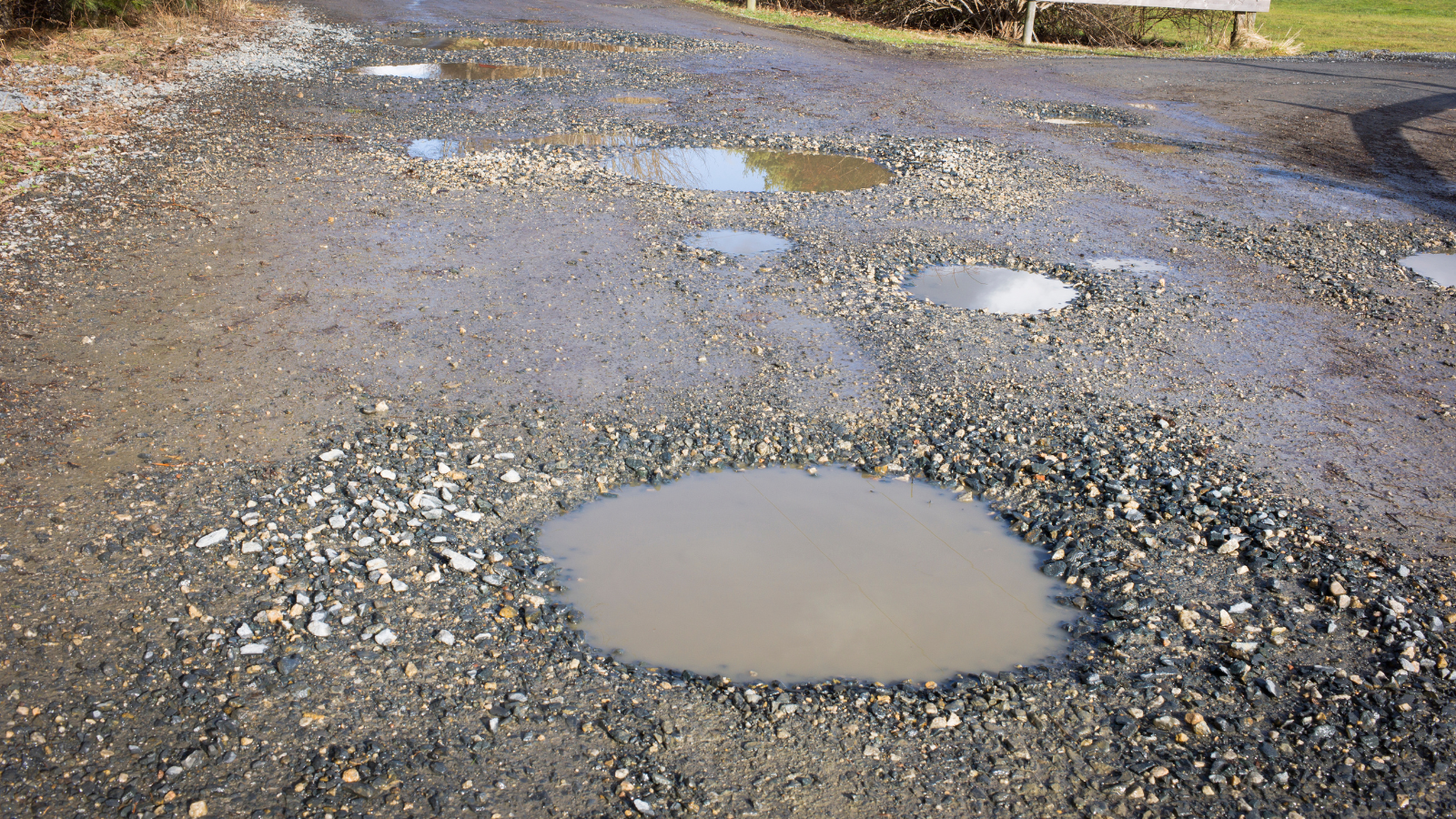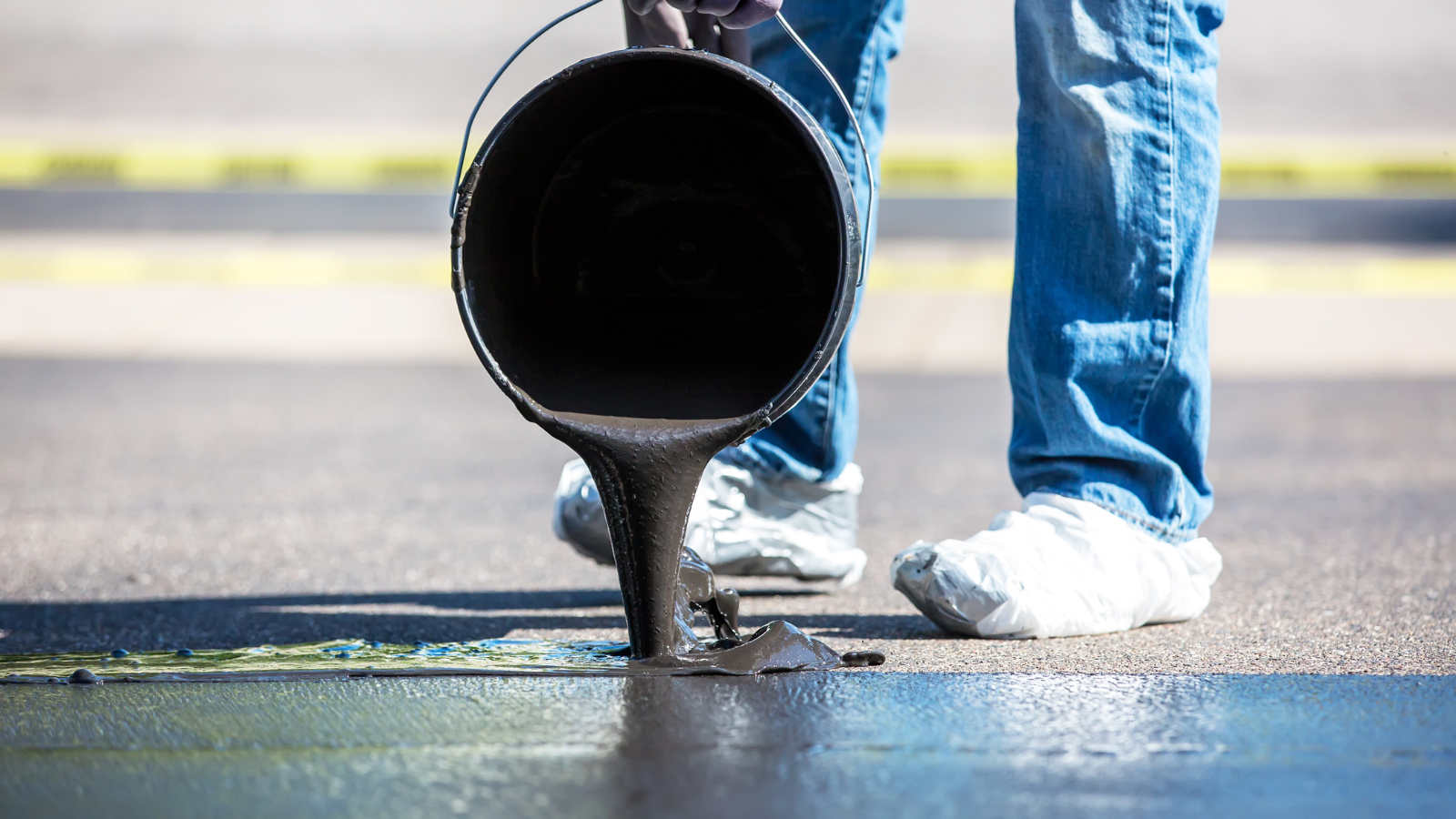Potholes are a common sight on roads, causing inconvenience and potential damage to vehicles and posing risks to pedestrians. Understanding the causes and implementing effective repair methods is essential to maintaining safe and durable roads. This guide will explore the causes of potholes, their impact, and eight effective repair methods to keep our roads in top condition.
For years, we’ve proudly served the Elizabeth, New Jersey community with top-notch asphalt and concrete maintenance and construction services—all at competitive rates. Ready to get started? Speak with one of our experts today! Call us at 908-458-9401.
What Causes Potholes?
Potholes are holes or depressions in the surface of the road. usually caused by the combination of traffic wear and the weather. The primary causes include:
- Water Infiltration: When water seeps into cracks in the road, it weakens the underlying soil. Freezing temperatures cause the water to expand, leading to the formation of cracks. When the ice melts, the ground shifts, and the pavement above breaks, creating potholes.
- Traffic Stress: Heavy vehicles, such as trucks and buses, exert significant pressure on the road surface. Over time, this stress causes the road to crack and degrade, especially in areas where the pavement is already weakened.
- Temperature Fluctuations: Changes in temperature cause the road materials to expand and contract. Repeated cycles of freezing and thawing weaken the road structure, leading to pothole formation.
- Poor Road Construction: Inadequate road design, substandard materials, and improper compaction of the road base can lead to early deterioration, making the road more susceptible to pothole formation.
Impact on Vehicles and Pedestrians
Potholes can have serious consequences for both vehicles and pedestrians:
- Vehicle Damage: Potholes can cause flat tires, bent rims, misalignment, suspension damage, and even accidents. Hitting a pothole can lead to costly repairs, affecting the driver’s wallet and safety.
- Pedestrian Safety: For pedestrians, potholes are tripping hazards. They can cause injuries and pose a significant risk, especially for children, the elderly, and people with disabilities.
- Traffic Congestion: Potholes slow down traffic, causing congestion and increasing the likelihood of accidents. Drivers may swerve to avoid potholes, leading to dangerous situations on the road.
8 Effective Repair Methods to Maintain Safe and Durable Roads
- Pothole Patching: This is a quick and temporary solution. Cold mix asphalt is poured into the pothole and compacted. While effective for immediate repairs, it may not be a long-term solution as the patch can be dislodged by traffic and weather.
- Hot Mix Asphalt Patching: Hot mix asphalt provides a more durable solution than cold mix. It involves heating asphalt, pouring it into the pothole, and compacting it. This method is more effective but requires specialized equipment and materials.
- Infrared Pothole Repair: This method uses infrared technology to heat the area around the pothole. The existing asphalt is then raked and mixed with new asphalt before being compacted. This creates a seamless repair, blending with the existing road surface.
- Spray Injection Patching: In this method, a specialized machine sprays a mixture of asphalt and aggregate into the pothole. The high-pressure application ensures a strong bond, making it a durable repair option, especially for larger potholes.
- Full-Depth Road Repair: For severe potholes that have damaged the road base, a full-depth repair is necessary. This involves removing the damaged road section, replacing the base materials, and repaving with new asphalt. While costly, it ensures a long-lasting solution.
- Edge Seal Pothole Repair: This method involves applying a sealant to the edges of the pothole before filling it with asphalt. The sealant prevents water from seeping into the repaired area, enhancing the durability of the repair.
- Concrete Patching: In areas where concrete roads are prevalent, concrete patching is an effective solution. The damaged concrete is removed, and a new concrete mix is poured and smoothed. This approach is extremely robust and resilient heavy traffic.
- Preventive Maintenance: Regular road inspections and maintenance can prevent potholes from forming. Crack sealing, drainage improvements, and surface treatments can extend the life of the road and reduce the likelihood of pothole formation.
Conclusion
Potholes are more than just a nuisance—they are a risk to safety and a possible cause of significant damage to vehicles. By understanding the causes of potholes and implementing effective repair methods, we can ensure our roads remain safe, durable, and efficient for all users. Potholes may be avoided and the lifespan of pavement can be increased with regular care and prompt repairs our roadways. With these strategies in place, we can keep our roads smooth and safe, ensuring a better driving experience for everyone.
By prioritizing the prevention and repair of potholes, We can build a more dependable and safe road network, ultimately benefiting the entire community.






